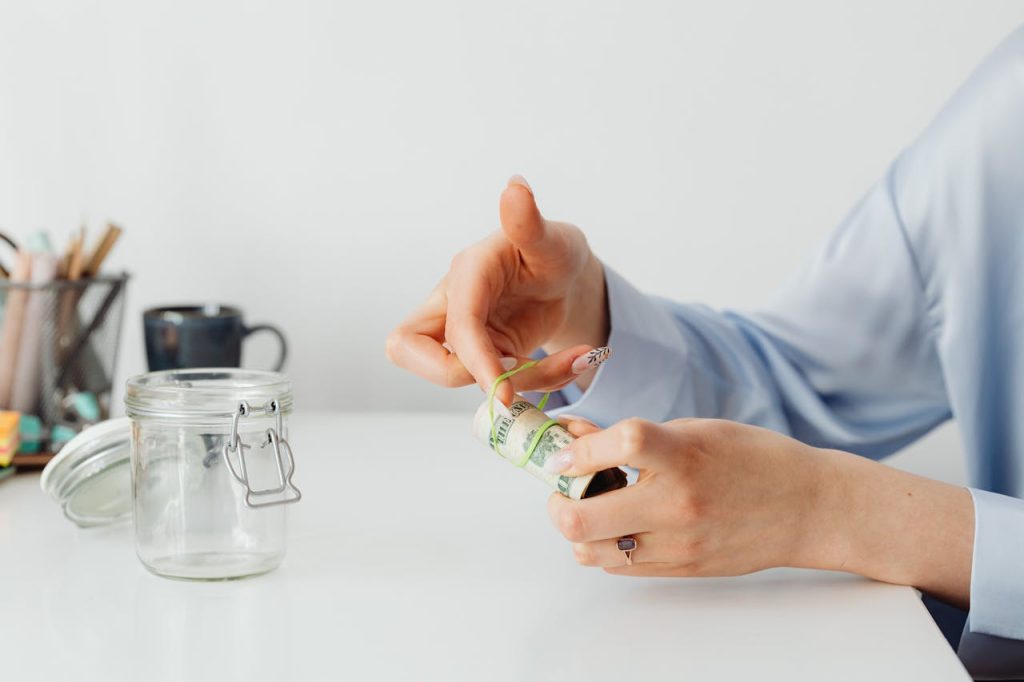
These days, many folks pay for items through debit cards, credit cards, and mobile payment apps. But what happens if banks experience an outage, ATMs stop working, or you need cash for an unexpected situation? Keeping a small amount of emergency cash in your home can be a smart financial move—especially for current and former athletes who travel often or need to be prepared for last-minute expenses. However, keeping too much cash at home can be risky. Not only does it leave you vulnerable to theft or loss, but it also prevents that money from earning interest in a high-yield savings account or growing in other investments. So how much is enough, and what should home emergency cash be used for? Below are a few of the items I’ve discussed with Kurt, and things to consider when adding to our emergency fund.
A Guide to Emergency Funds
Why Keep Cash at Home?. There are several reasons why having a small cash reserve in your home is a good idea:
- Bank outages. If your bank’s systems go down, ATMs and debit cards may not work.
- Natural disasters. Storms, power outages, or emergencies may make it difficult to access your funds.
- Unexpected travel. You may need cash for last-minute travel, tolls, or gas in a pinch.
- Emergency expenses. If your credit or debit cards get lost or stolen, cash can be a backup.
- Small local purchases. Some places, like farmers’ markets or local vendors, may only accept cash.
How Much Cash Should You Keep at Home? A good rule of thumb is to keep $200 to $1,000 in cash at home, depending on your lifestyle and needs. Here’s how to decide on the right amount for you:
- $200-$300: ideal for covering small emergencies like gas, food, or minor unexpected expenses.
- $500: a solid amount for short-term travel needs, emergencies, or situations where cards aren’t accepted.
- $1,000 (or slightly more): good for families or individuals who may need extra cash for unexpected hotel stays, last-minute flights, or emergency repairs.
Keeping more than $1,000 in cash at home is typically not recommended. Excess cash should be kept in a high-yield savings account, money market account, or other interest-earning options to ensure your money is working for you.
Best Uses for Home Emergency Cash. Your home cash reserve should only be used for specific emergency situations, not that last-minute take out order! Here are some of the best reasons to dip into your stash:
- Last-minute travel expenses (gas, hotel, food)
- Medical emergencies where cash is required
- Natural disasters where ATMs or credit card machines are down
- Unexpected home repairs when immediate payment is needed
- Situations where digital payments aren’t accepted
- Lost or stolen wallet situations where you need backup cash
Where to Store Emergency Cash Safely. If you’re keeping cash at home, make sure it’s stored securely. Consider:
- A fireproof and waterproof safe. Protects against fire, water damage, and theft.
- Multiple small stashes. Instead of keeping all your cash in one place, store small amounts in different locations.
- Avoiding obvious spots. Stay away from storing cash in places like sock drawers or under mattresses, as these are common targets for thieves.
Keeping cash at home is a smart financial strategy when done correctly. By maintaining a reasonable emergency fund—between $200 and $1,000—you ensure that you’re prepared for the unexpected while still allowing your money to grow in other financial accounts. For athletes who travel frequently or have unpredictable schedules, having cash on hand can be even more beneficial. Just remember: don’t let too much of your money sit idle at home when it could be working for you elsewhere. Balance is key.